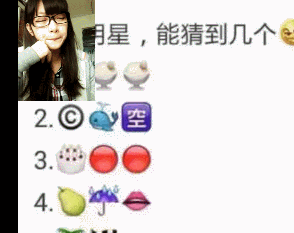Android學習之ImageView放置gif動態圖
阿新 • • 發佈:2019-02-13
最近做圖片的時候碰到一個問題,就是imageview控制元件中放動態圖,顯示出來的效果跟靜態圖是一樣的。於是我網上大概找了一下資料,對於這方面大概有三個解決方法
一、將gif用工具分割,一幀一幀的播放
這篇部落格中有介紹http://www.cnblogs.com/TerryBlog/archive/2010/09/06/1819641.html
二、使用開源框架
Glide是個不錯的選擇,當然也還有其他的,下面這篇部落格,對於Glide講的還比較清晰
http://blog.csdn.net/fancylovejava/article/details/44747759
三、自定義imageview,使用Movie來播放
好了,對於這個,我親手做了個demo,註解還算全
由於是要自定義控制元件,我們還可能會用到一些自定義的屬性,因此在values目錄下新建一個attrs.xml的檔案,可以在這個檔案中新增任何需要自定義的屬性。這裡我們目前只需要一個auto_play屬性,程式碼如下所示:
<declare-styleable name="MyImageView">
<attr name="auto_play" format="boolean">
</attr>
</declare-styleable>這個寫好了,接下來我們要寫一個類來繼承imageview或view
package com.jp.tools;
import android.content.Context;
import android.content.res.TypedArray;
import android.graphics.Bitmap;
import android.graphics.BitmapFactory;
import android.graphics.Canvas;
import android.graphics.Movie;
import android.os.SystemClock;
import android.util.AttributeSet;
import 佈局的程式碼:
<com.jp.tools.MyImageView
android:src="@drawable/pic_four"
android:layout_width="match_parent"
android:layout_height="match_parent"
attr:auto_play="true"
/>
<!--設定attr:auto_play="true"動態圖就會自動播放,如果不設定,或未false圖片就需要點了之後才播放 -->
效果圖(哈哈,還是很萌的妹紙吧):

對了,還有一點需要說一下,這種方法的實現當gif圖片過大的時候會報oom。所以對於圖片的大小要注意一下。
希望大家多多交流,有什麼更好的實現方法
